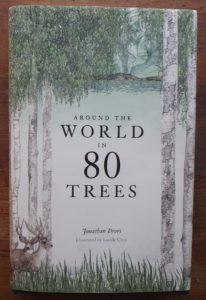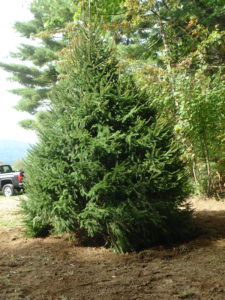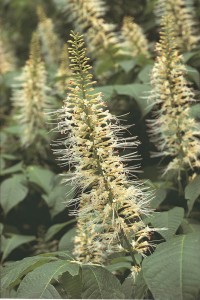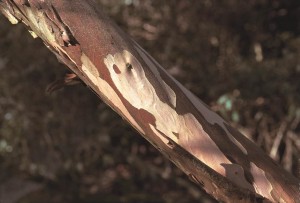Around the World in 80 Trees
I love trees, and find them endlessly fascinating. Each is unique, much as we are. One winter I attempted (and failed) to read all of Michael Dirr’s authoritative Dirr’s Encyclopedia of Trees and Shrubs – all 950 pages of it. I only read about trees that are hardy here, and still only found time to read about half of it.
Recently I found a more manageable project, reading Jonathan Drori’s Around the World in 80 Trees. At just over 200 pages, and nearly half of that illustrations, it gave me the satisfaction of a project easily completed. And it provided countless bits of information that I didn’t know.
For example, I never knew that the great violin builders Stradivarius and Guarneri used Norway spruce for their sounding boards. Apparently Norway spruce, particularly old ones that grew on the mountains of Switzerland, are very dense but lightweight – and perfect for violins.
And alders were important for the development of Venice, Italy. Apparently it is highly resistant to rot if submerged in water. Their engineers drove stakes of alder (9 per square meter) and filled in around them and over them with rocks and broken bricks. Then they built bridges and buildings on them – many of which still are solidly in place, up to 700 years later.
Also the Venetians used alders to make the best charcoal for gunpowder, allowing them to advance militarily. Even today the best gunpowders use charcoal from alders. And I thought alders were junk.
I recently bought some shampoo which touted that it contained “argan oil”. Huh? I’d never heard of argan, and it sounds to me like something from a factory along I-95 in New Jersey. Nope. It is a tree that grows in North Africa.
Argan produces a fruit the size of a plum with a nut inside with 1 or 2 hard, oil-rich seeds. Traditionally women in Algeria and Morocco harvest the seeds and grind them to a pulp and extract the oil. Amazingly, 3 million people depend on the oil for their income. It is used as cooking oil and in cosmetics. And goats love the fruit, often climbing the trees to get at it – despite the numerous thorns on the branches.
Then I read about the tree that produces quinine, Cinchona spp. Originally from Ecuador and Peru, it produces alkaloids that kill malaria parasites in humans, despite the fact that those two countries had no indigenous malaria. But quinine allowed explorers of tropical malarial zones to survive the ravages of this terrible fever.
And of course, quinine is key to the development of the gin and tonic, invented by the British in India. My grandfather got malaria living near the swamps of East Boston in the early 1900’s and probably resorted to quinine when it recurred – which may have given him an excuse for a gin and tonic from time to time.
I was fascinated to learn that the quaking aspen trees (Populus tremuloides) spread largely by root, and that huge forests of this aspen are all connected by roots, and are essentially one tree. The largest living thing in the world, by this definition, is a single quaking aspen that has 45,000 stems and covers 100 acres of ground. The tree, though not any individual stem, is thought to be 80,000 years old. It is the most widely distributed tree in North America – so you probably have one.
As a teen I read a book by Betty Smith called, A Tree Grows in Brooklyn about a family there. She used the tree as a metaphor for the immigrants struggling to grow in poor conditions, as the tree does. The tree in the title is the invasive Tree of Heaven (Ailanthus altissima).
Originally from China, Tree of Heaven was introduced to New York State in 1820. It grows fast, grows most anywhere, and is nearly impossible to get rid of. Cut one down, and the roots send up new shoots all over – even through a crack in the sidewalk. It is hardy to Zone 4 (minus 30 degrees in winter) but I have never seen one here in New Hampshire.
We all know the Eastern White Pine, but I did not know that it sucks up nitrogen from the soil and saves it for use later. And that in so doing, the pine helps to discourage other trees from competing with it.
I also learned that our sugar maples, when grown in Europe, do not have the bright red leaves we love in autumn. Their fall climate is gray and cool, and maples need bright sun and cold nights to get those red colors. Maybe that is why some years our maples are less impressive – if we’ve had a rainy fall.
I visited a friend in Florida this winter, and went to a mangrove swamp. I learned from this book that the red mangrove (Rhizophora mangle) gives birth to live young while they are still attached to the mother tree. The seeds germinate and grow, eventually dropping off as seedlings. Amazing.
So if you’d like an entertaining read, get a copy of Around the World in 80 Trees. There is plenty more to learn.
Henry is the author of 4 gardening books. His e-mail is henry.homeyer@comcast.net.
Winter Reading
Going cross country skiing is generally my way of keeping cheery during long, cold winters. We started off the winter with plenty of snow, but lost most of it in January rains, and recently we’ve just had cold weather. It would be pretty easy for me to get the blues under these conditions, so I’ve been looking for ways to keep myself cheerful. One of the ways I do that is by learning about new plants, and dreaming of growing them once winter has ebbed.
Even though it came out in 2011, I only recently got my own copy of Dirr’s Encyclopedia of Trees & Shrubs. It’s 950 pages of information about 3700 species of woody plants – with more than 3500 good color photos. I have decided to read it cover to cover by April, though I am skimming the parts about plants for Zones 7 to 9. And since I own it, I am underlining and highlighting relevant info about plants that I want to try. I’d like to share a few of my ideas for purchases with you.
I’ve filled up most of my sunny places, so things that do well and bloom in shade are of interest to me. In the back of the book are lists of plants that do well in various conditions. It lists 225 plants that do well in shade (though some are outside our climatic zone).
First on my list of shade lovers to buy is bottlebrush buckeye (Aesculus parviflora). Dirr calls it “truly one of the best native shrubs for late-spring and early summer”. It is hardy to Zone 4 and “flowers almost as prolifically in shade as in sun.” The blossoms are 8 to 12 inch long, bottlebrush-shaped white inflorescences similar to those on horse chestnut trees– they are ‘cousins’ in the same genus. But it is an understory plant, growing to be just 8 to 12 feet high and 8 to 15 feet wide. And although it likes moist, well-drained soils best, it will grow almost anywhere.
Next, for both the bark and the blooms, I want to buy a Japanese clethra (Clethra barbinervis). It is a Zone 5 plant (good to minus 20) that requires shade and moisture-retentive soil for success. I have plenty of moist, shady areas near my stream that would easily harbor a 10 to 20 foot-tall shrub or small tree. The small blossoms are displayed in hanging panicles in July and August – a time when few other shrubs are blooming. The bark is exfoliating (it peels, exposing different colors of bark), which means it will be interesting to look at in winter.
I’ve always Franklinia (Franklinia alatamaha) for its bark which has interesting vertical fissures and for its 3-inch fragrant white blossoms in July and August. It will grow in shade and likes moist, well-drained soils. But Dirr warns that poorly drained soils generally prove fatal. It is a shrub or small tree, 10 to 20 feet high and 6 to 15 feet wide.
Franklinia was originally found in 1770 in Georgia, named after Ben Franklin, and disappeared from the wild by 1790. It is, according to Dirr, “a somewhat persnickety landscape plant.” Does that deter me? Well it has so far, but now that USDA has reclassified my area as Zone 5, and Dirr says this is a Zone 5 plant, maybe I should try it. I have not seen it succeed in New Hampshire or Vermont, which should warn me not to spend too much on my experiment. If you have grown it, please let me know how it did, and where you grew it.
Another tree that interests me is paw-paw (Asimina triloba). This is a small understory tree that produces edible fruit with a somewhat tropical flavor – a bit like bananas. I have only seen – and tasted – it in the Athens, Ohio area but Dirr says it is hardy to Zone 5. It does well in moist, well-drained soils in shade to full sun. Dirr says it will sucker (send out roots from the mother plant) so that it creates colonies. I have never seen the flowers, but he describes them as “lurid purple flowers that creep out of hairy brown buds before the leaves come out in April or May”.
Why is it that we see so few of these more unusual shrubs and trees? It may be that nurseries are unwilling to try things that no one has ever heard of. Or it may be that some growers have tried them, and the plants did not do well. Soil type (sandy, loam or clay) and soil pH (level of acidity) are important, but so are microorganisms. It may be that the bacteria and fungi in the soil along a stream bank in Ohio are very different than along my own stream.
My grandfather, John Lenat (1885 to 1967), was not an educated man, but a wise one who was an organic gardener long before it was fashionable. He told my sister once, “When you transplant something, bring along enough soil so that it will remember where it came from.” What he was saying, I think, is that you should bring along enough soil to inoculate your soil with the microorganisms from the site where it thrived.
Professor Dirr’s book is fun reading, too. He is opinionated and comes out with occasional wild statements – “with the right amount of imagination they (the flowers of Colutea arborescens) conjure visions of Yosemite Sam”, for example. So get your library to order a copy – or order your own.
Henry’s website is www.Gardening-Guy.com. He is the author of 4 gardening books.







